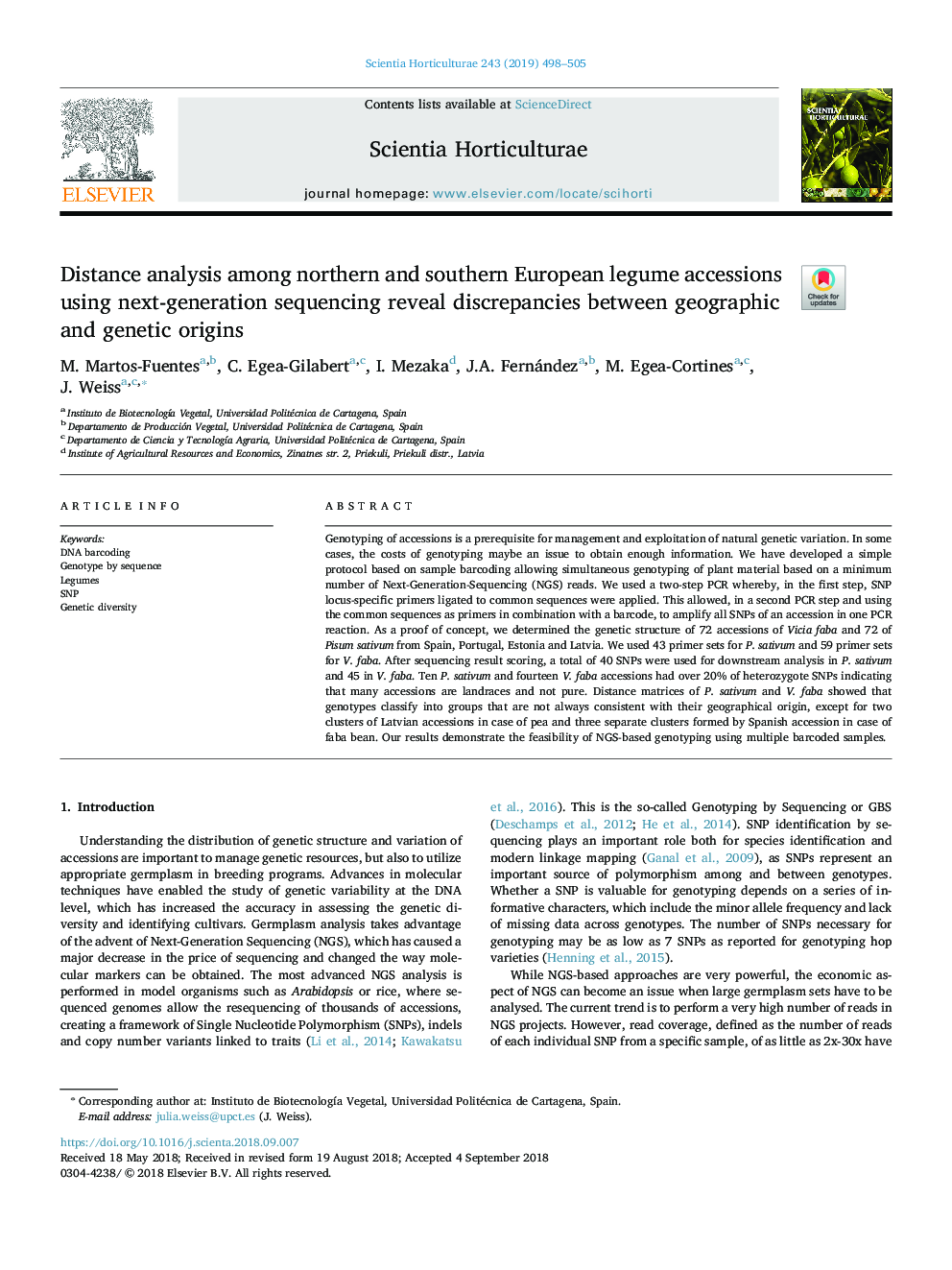| کد مقاله | کد نشریه | سال انتشار | مقاله انگلیسی | نسخه تمام متن |
|---|---|---|---|---|
| 9489616 | 1628755 | 2019 | 8 صفحه PDF | دانلود رایگان |
عنوان انگلیسی مقاله ISI
Distance analysis among northern and southern European legume accessions using next-generation sequencing reveal discrepancies between geographic and genetic origins
ترجمه فارسی عنوان
تجزیه و تحلیل فاصله ای در میان اروپایی های شمالی و جنوبی اروپایی با استفاده از توالی های نسل بعدی، تفاوت های بین ژنوتیپ های ژنتیکی و ژنتیکی را نشان می دهد
دانلود مقاله + سفارش ترجمه
دانلود مقاله ISI انگلیسی
رایگان برای ایرانیان
کلمات کلیدی
موضوعات مرتبط
علوم زیستی و بیوفناوری
علوم کشاورزی و بیولوژیک
دانش باغداری
چکیده انگلیسی
Genotyping of accessions is a prerequisite for management and exploitation of natural genetic variation. In some cases, the costs of genotyping maybe an issue to obtain enough information. We have developed a simple protocol based on sample barcoding allowing simultaneous genotyping of plant material based on a minimum number of Next-Generation-Sequencing (NGS) reads. We used a two-step PCR whereby, in the first step, SNP locus-specific primers ligated to common sequences were applied. This allowed, in a second PCR step and using the common sequences as primers in combination with a barcode, to amplify all SNPs of an accession in one PCR reaction. As a proof of concept, we determined the genetic structure of 72 accessions of Vicia faba and 72 of Pisum sativum from Spain, Portugal, Estonia and Latvia. We used 43 primer sets for P. sativum and 59 primer sets for V. faba. After sequencing result scoring, a total of 40 SNPs were used for downstream analysis in P. sativum and 45 in V. faba. Ten P. sativum and fourteen V. faba accessions had over 20% of heterozygote SNPs indicating that many accessions are landraces and not pure. Distance matrices of P. sativum and V. faba showed that genotypes classify into groups that are not always consistent with their geographical origin, except for two clusters of Latvian accessions in case of pea and three separate clusters formed by Spanish accession in case of faba bean. Our results demonstrate the feasibility of NGS-based genotyping using multiple barcoded samples.
ناشر
Database: Elsevier - ScienceDirect (ساینس دایرکت)
Journal: Scientia Horticulturae - Volume 243, 3 January 2019, Pages 498-505
Journal: Scientia Horticulturae - Volume 243, 3 January 2019, Pages 498-505
نویسندگان
M. Martos-Fuentes, C. Egea-Gilabert, I. Mezaka, J.A. Fernández, M. Egea-Cortines, J. Weiss,
